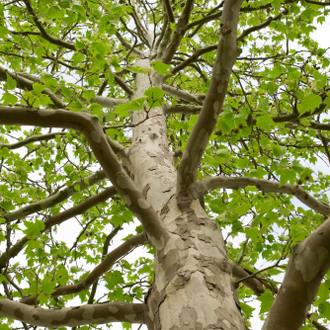Signs Your Tree is Rotten – Why You Should Be Concerned
Index
Sometimes, it’s hard to tell if a tree is sick. Often, we ignore the warning signs and end up with a tree that ends up needing to be removed. Since tree rot happens from the inside out, early warning signs may be missed. If you’re worried about your trees or fear they may be rotten, there are various signs and symptoms to look out for.
Signs Your Tree May Be Rotten

If branches are either breaking off regularly, or the highest branches aren’t expanding, this usually indicates that the tree is not healthy, and suffering from root loss as a result of internal rotting. Yellowing leaves and brown tips on leaves indicate that the tree roots are too deep and not allowing the tree to grow. Damaged roots will also manifest themselves with moss or ferns growing on the tree, thanks to insects and bacteria eroding healthy bark. You can check to see if a tree is hollow by either drilling a small hole into the trunk or hitting it with a rubber mallet to see if it sounds hollow.
Other signs of a rotten tree include cavities and rotten wood in the trunk, mushrooms growing at its base, cracks and splits in the trunk or limbs, dead and hanging branches, and broken roots. It’s best to get an arborist to examine the tree and advise whether tree lopping, tree cutting or a full removal is the best option.
Want to find a tree feller in Sydney, Melbourne, Brisbane, Adelaide or Perth?
Different Types of Tree Rot
Tree rot, or decay, is caused by different types of fungus and have three basic stages of rot:
- Incipient decay (white rot), which is hard to detect as the cell walls of the wood has only just begun to break down
- Intermediate decay (brown rot), when the wood begins to become discoloured and the strength of the wood has become extremely compromised
- Advanced decay (soft rot), at which point, the strength of the cell structure has collapsed
These three types of tree rot are further classified by the area of the tree that is affected:
- Root rot, when fungi enter the tree through the root system
- Butt rot, when fungi move through the tree’s system into the trunk
- Heart rot, when fungi enter the heartwood at the centre of the tree
- Sap rot, when a secondary fungal invasion happens after a primary invasion by bark beetles or weather injury
If left unchecked, rot and decay can end up killing off an entire tree. Preventative measures, however, can be taken to protect trees from rot.
How to Prevent Tree Rot
While any tree can be affected by various types of tree rot, trees that are old, environmentally stressed, or diseased are even more susceptible. It’s important to look for early signs of trouble in order to prevent tree rot from spreading:
- Unexpected tree leaning
- Mushroom-like growths outside of the trunk
- Wilting leaves
- Slow or stunted growth
- Fine sawdust at the base of the tree
- Dead branches on the ground
Because tree rot is hard to see from the outside, it’s always advisable to contact an arborist who can assess the situation.
It’s best to catch tree rot before it starts. Avoid tree rot by:
- Avoid adding mulch immediately adjacent to the tree to prevent excess moisture at the base of the tree
- Remove environmental stressors like insect infestations or poor drainage
- Look for phosphorous rich fertilizers to promote root growth
- Prune dead wood or damaged branches as soon as you see them
